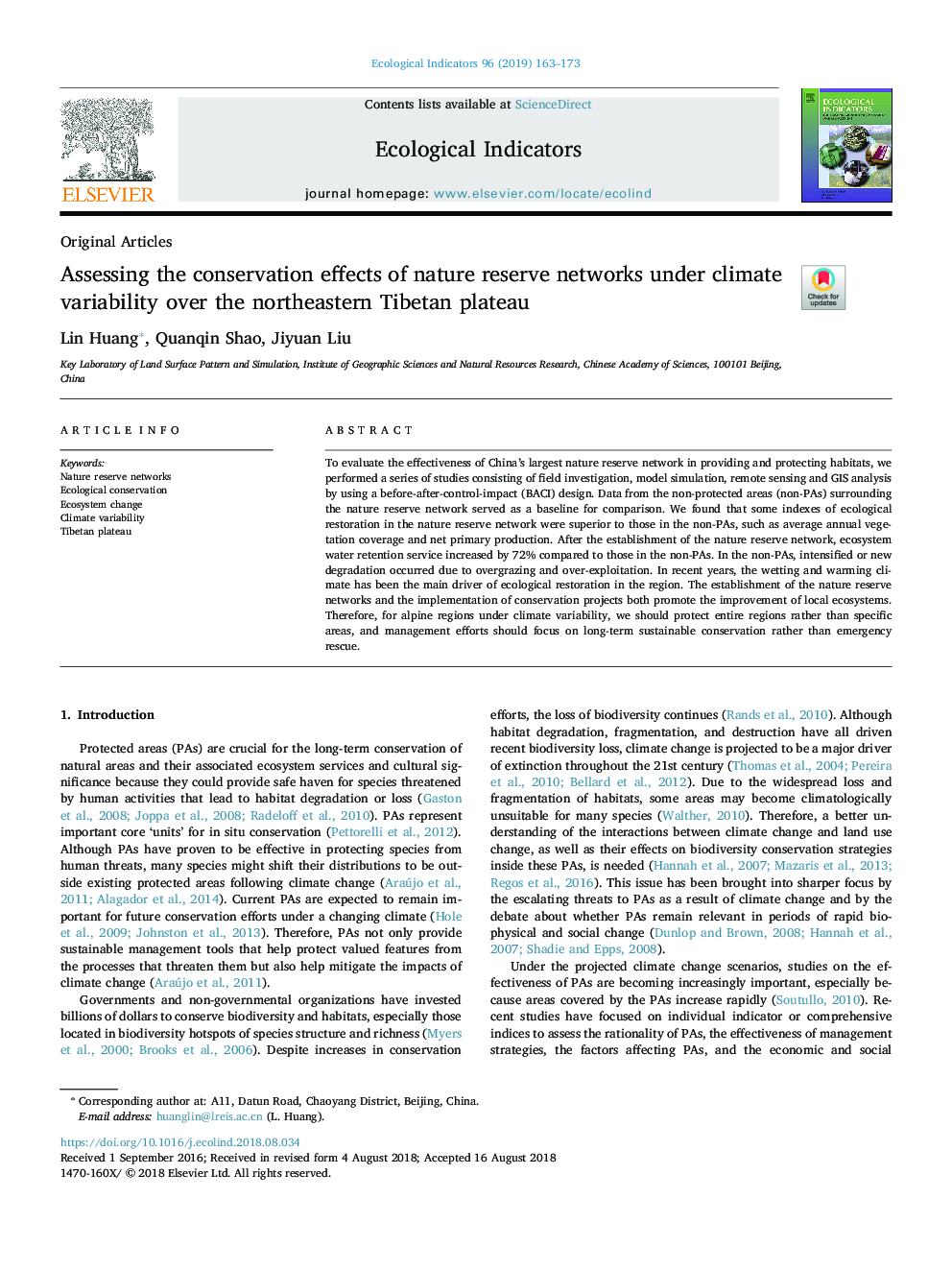| Article ID | Journal | Published Year | Pages | File Type |
|---|---|---|---|---|
| 10144207 | Ecological Indicators | 2019 | 11 Pages |
Abstract
To evaluate the effectiveness of China's largest nature reserve network in providing and protecting habitats, we performed a series of studies consisting of field investigation, model simulation, remote sensing and GIS analysis by using a before-after-control-impact (BACI) design. Data from the non-protected areas (non-PAs) surrounding the nature reserve network served as a baseline for comparison. We found that some indexes of ecological restoration in the nature reserve network were superior to those in the non-PAs, such as average annual vegetation coverage and net primary production. After the establishment of the nature reserve network, ecosystem water retention service increased by 72% compared to those in the non-PAs. In the non-PAs, intensified or new degradation occurred due to overgrazing and over-exploitation. In recent years, the wetting and warming climate has been the main driver of ecological restoration in the region. The establishment of the nature reserve networks and the implementation of conservation projects both promote the improvement of local ecosystems. Therefore, for alpine regions under climate variability, we should protect entire regions rather than specific areas, and management efforts should focus on long-term sustainable conservation rather than emergency rescue.
Related Topics
Life Sciences
Agricultural and Biological Sciences
Ecology, Evolution, Behavior and Systematics
Authors
Lin Huang, Quanqin Shao, Jiyuan Liu,
